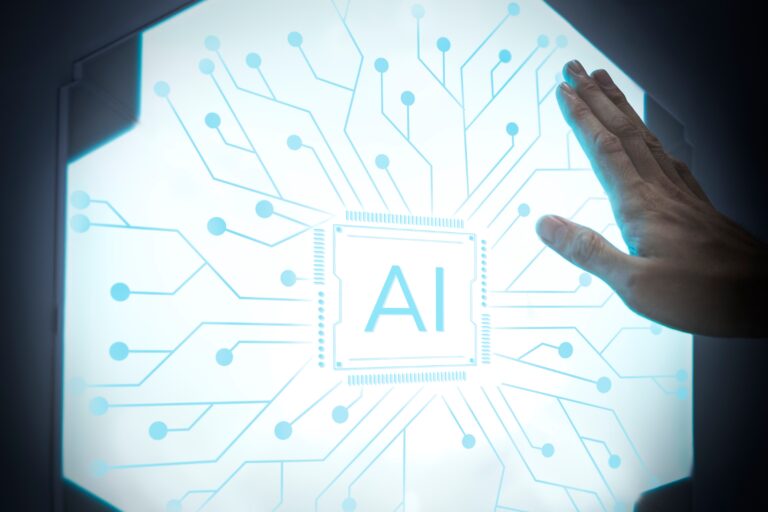
Introduction
It happened quietly, almost like an editorial experiment that wasn’t supposed to change anything. Yet it did. In March 2025, the Italian newspaper Il Foglio released what it called the first edition in the world written entirely by Artificial Intelligence. Every headline, every op-ed, every letter to the editor came from algorithms. The newsroom only asked the questions; the machines wrote the answers.
The event rippled far beyond Italy. It wasn’t just about technology; it was about trust, identity, and the invisible line between creativity and automation. For the first time, the centuries-old craft of journalism—the art of thinking in public—had handed the pen to a machine.
The experiment that started a debate
The AI edition, printed both online and in paper format, looked like any other issue. Layouts, typography, even humor and irony—all intact. Readers could barely tell that not a single word had been written by a human. The system used large-language models trained on previous articles of the paper, instructed through prompts written by journalists.
Behind the scenes, the editorial staff treated the project as a controlled experiment. Their goal, they said, was not to replace writers, but to test the limits of AI’s narrative competence. What can an algorithm truly understand about irony, context, or truth? What happens when the rhythm of human imperfection disappears from the page?
Machines that write like us—but don’t feel like us
The results were uncanny. The AI produced coherent arguments, structured paragraphs, even subtle tones of voice. It mimicked the wit of columnists, the analytical precision of political reporting, and the tempo of opinion pieces. But beneath the surface, something felt hollow.
There was no tension, no hesitation, no vulnerability—the qualities that make human writing alive. An AI can reproduce syntax, but not doubt. It can analyze data, but not carry the burden of conscience. Journalism, at its best, is not only about facts; it is about what those facts mean to us.
Still, the experiment revealed the astonishing progress of generative models. A decade ago, machines could barely write a coherent news brief. Now, they can produce an entire edition that looks and sounds human. The question is no longer if AI can write—but why we want it to.
The seduction of efficiency
For publishers, the promise is tempting: faster production, lower costs, infinite scalability. AI can summarize political speeches in seconds, generate visuals, and even tailor tone to each reader. In an industry battered by shrinking revenues and audience fatigue, such efficiency feels like salvation.
Yet the same logic that optimizes production can erode meaning. When speed becomes the measure of value, depth becomes collateral damage. Journalism risks turning into a perfectly formatted stream of information—accurate perhaps, but devoid of soul.
That tension lies at the heart of today’s media revolution. Artificial Intelligence doesn’t just automate writing—it redefines what we call authorship.

The human editor as the last frontier
Ironically, the AI edition of Il Foglio made one thing clearer than ever: humans are still essential, but their role is changing. The new journalist may become a curator of machines, an orchestrator who knows how to ask, refine, and verify. Writing becomes dialogue rather than dictation.
In this sense, the craft of journalism might evolve toward something hybrid: humans setting the moral compass, machines handling the mechanics. The future newsroom may resemble a studio where algorithms draft, and humans give purpose.
But this future depends on one fragile thread—trust. Readers will only accept AI-assisted journalism if transparency is absolute: clear disclosure of what is human and what is synthetic, open accountability for every fact, and ethical oversight for every process.
Between fascination and fear
Public reaction to Il Foglio’s AI edition oscillated between admiration and discomfort. Some hailed it as proof of progress, a new artistic frontier. Others saw it as the beginning of journalism’s decline—writing without empathy, commentary without conscience.
Both reactions are valid. Every technological leap in communication—from the printing press to social media—has triggered the same tension: liberation versus loss. AI merely accelerates that ancient conflict. It reminds us that information alone doesn’t create understanding; only empathy does.
The moral cost of delegation
Perhaps the deepest question raised by this experiment is not about writing, but about responsibility. If an AI publishes a falsehood, who answers for it? The editor who approved the prompt? The developers who built the model? Or the machine that has no concept of truth?
When authorship becomes collective between human and code, accountability blurs. In that fog of responsibility, misinformation can thrive unnoticed. Journalism, stripped of its human witness, risks becoming an echo—precise, persuasive, but empty.
What remains truly human
And yet, amid all this uncertainty, something hopeful emerges. The very discomfort we feel proves our humanity. We still care about who writes, who thinks, who dares to stand behind their words. We still crave the tremor of an honest voice, the intuition that a machine cannot replicate.
Artificial Intelligence may one day learn to imitate empathy, but it cannot experience it. It can predict our emotions, not share them. The heartbeat of journalism—its curiosity, its moral courage—remains, for now, stubbornly human.
Conclusion
The first AI-made newspaper edition is not an end; it’s a mirror. It reflects both the brilliance and the blindness of our age: our hunger for progress, and our fear of disappearing in it.
Maybe the future of journalism will not be human or artificial, but a careful conversation between the two. Machines may write the drafts; people will give them meaning. And as long as someone, somewhere, keeps asking why—not just how—then the story of truth will still belong to us.



